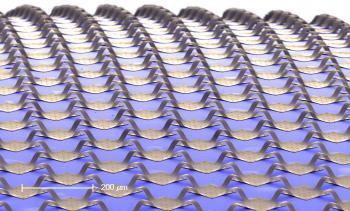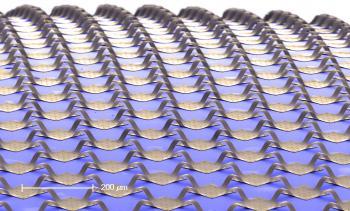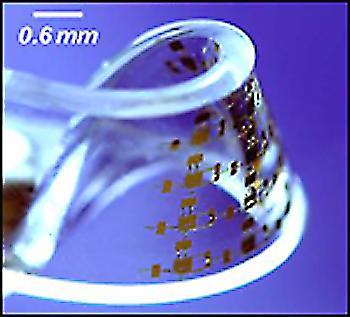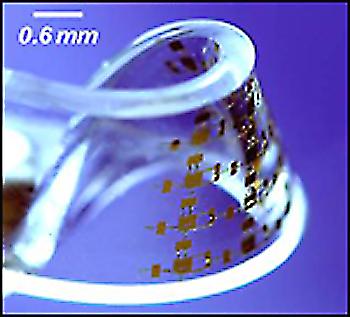Developed by Professor Yonggang Huang of Northwestern University, Chicago, and Professor John Rogers of University of Illinois, such electronics could be used in places where traditional electronic boards would fail, like on a human body. Their research has been published online by the Proceedings of the National Academy of Sciences (PNAS).
Traditional electronic boards are flat and rigid due to the brittle and inflexible nature of silicon – the base component of electronic chips – rendering an electronic device inoperative if bent or stretched.
Before the latest development, the team developed a one-dimensional form of silicon that could be stretched while maintaining its electrical properties. The results were published by the journal Science in 2006.
Earlier this year, they made flexible integrated circuits, though these circuits were less stretchable than their latest design. The technology used an array of circuit elements approximately 100 micrometres square, which were connected by metal wires called “pop-up bridges”.
These circuit elements were so small that when placed on a curved surface they didn’t bend – similar to how buildings don’t bend on the Earth’s curved surface. The system works because the pop-up bridges flex upwards when the circuit is bent or stretched.
In the most recent research reported in PNAS, the pair modified the pop-up bridges making them into an “S” shape, which, in addition to bending and stretching, have enough give that they can be twisted as well.
“For a lot of applications related to the human body – like placing a sensor on the body – an electronic device needs not only to bend and stretch, but also to twist,” said Professor Huang.
“So we improved our pop-up technology to accommodate this. Now, it can accommodate any deformation.”
Professor Huang and Professor Rogers are now focusing their research on applying the technology to create flexible solar panels.







